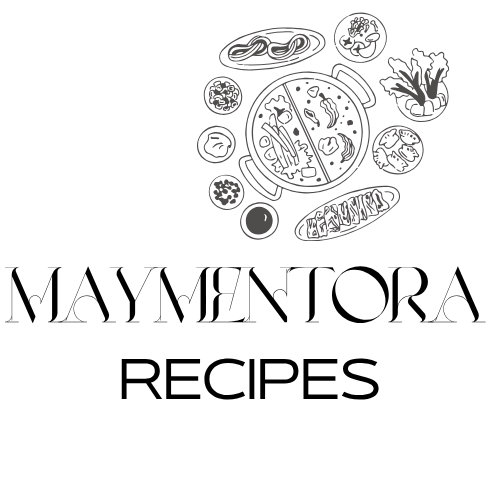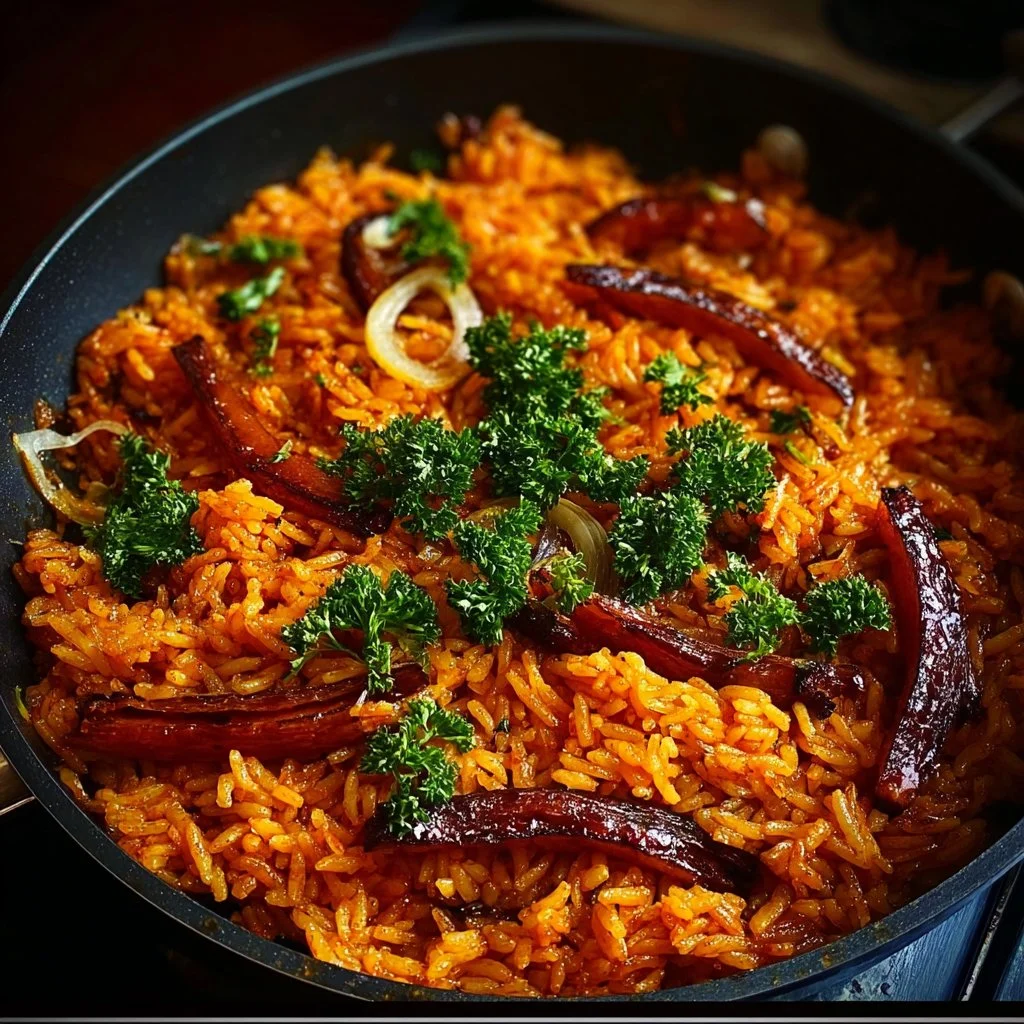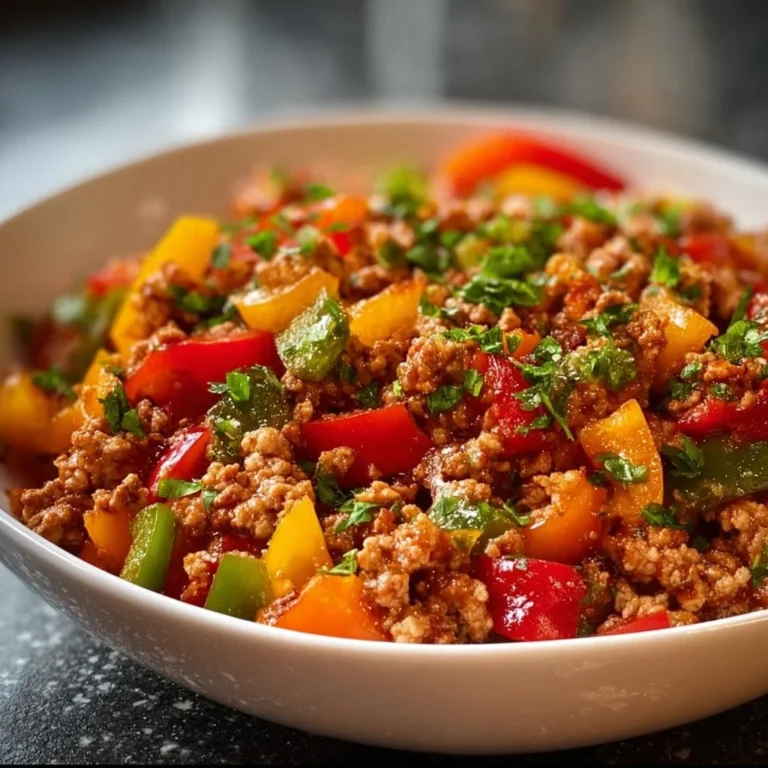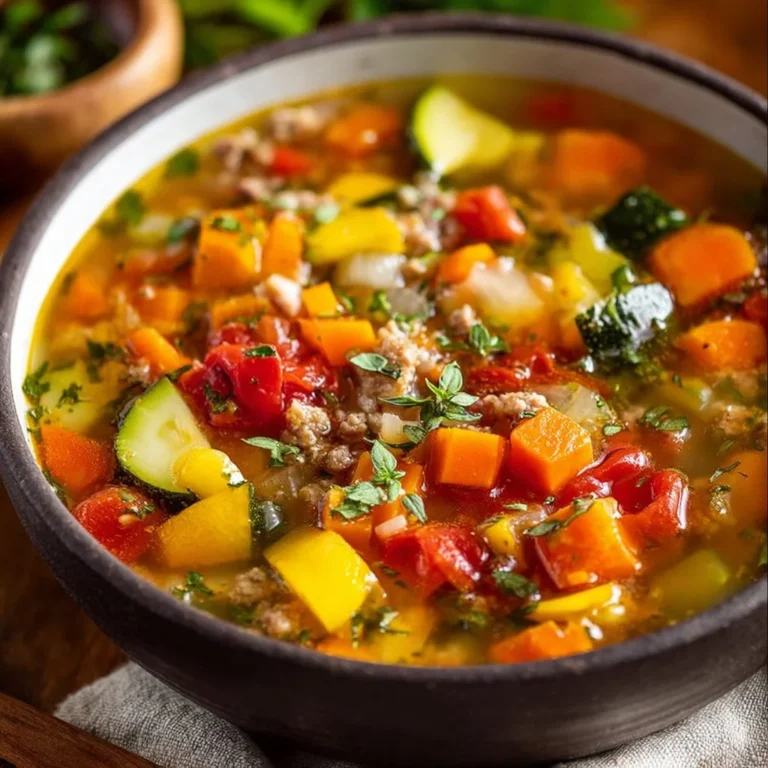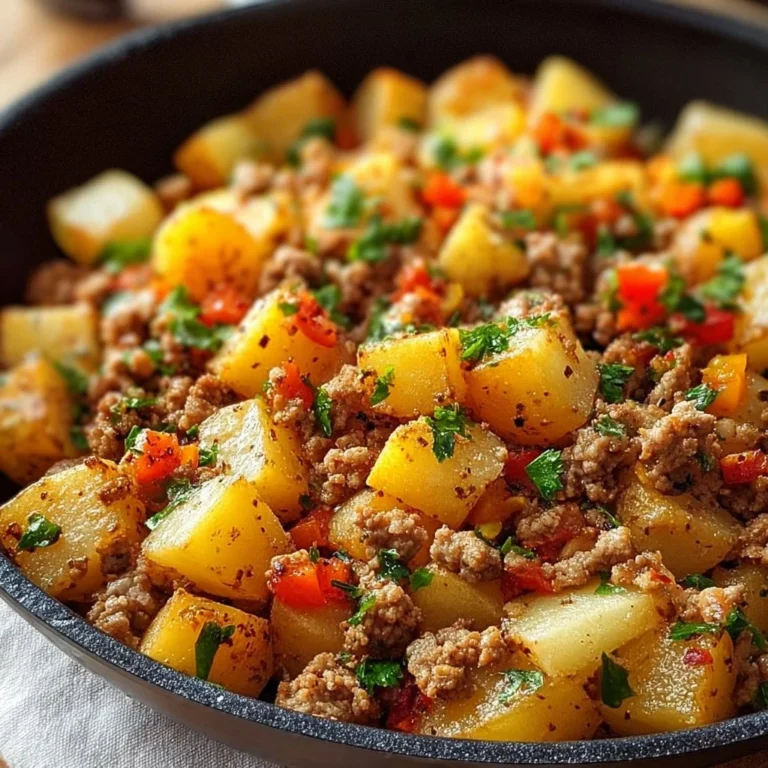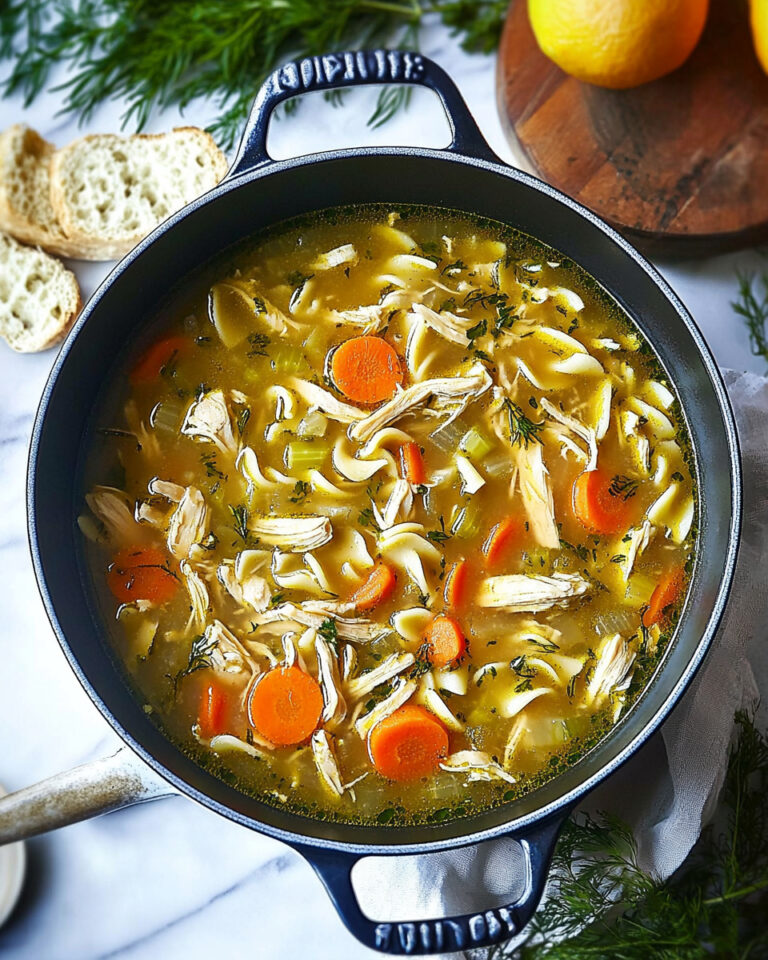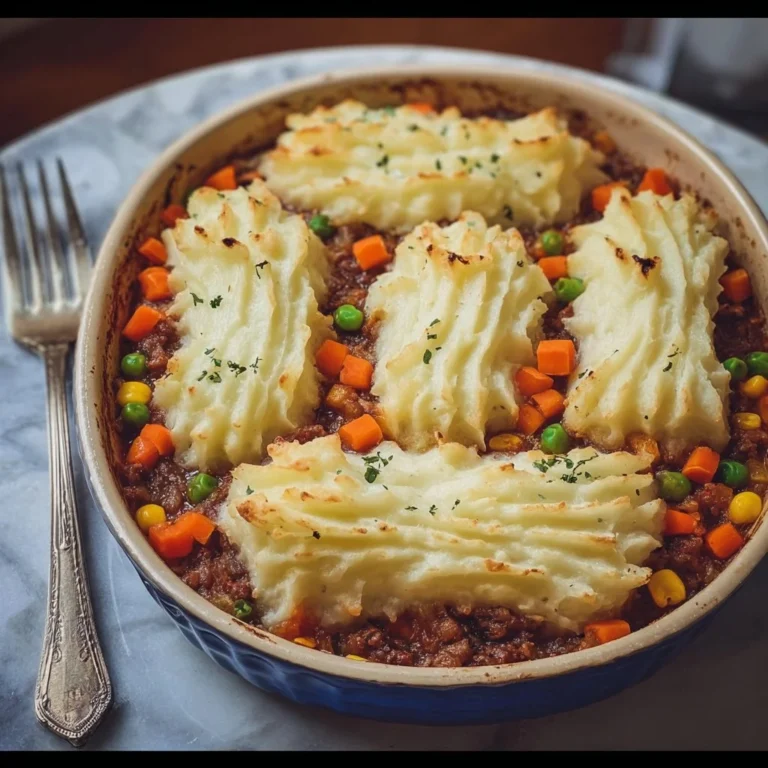Fiery Native Jollof Rice with Palm Oil That’s Simply Irresistible
Why Make This Recipe
Fiery Native Jollof Rice with Palm Oil is more than just a dish; it is a celebration of rich flavors, vibrant colors, and heartwarming memories that many people cherish. This Jollof rice recipe brings together the heat of spices and the unique flavor of palm oil that will surely captivate your taste buds. The dish is popular in West African countries, making it a must-try for anyone who loves bold, delicious meals. Using high-quality ingredients such as unrefined palm oil, fresh vegetables, and a variety of seafood not only enhances the taste but also adds nutritional value.
Jollof rice is also an excellent choice for gatherings, parties, and family dinners. It serves as a wonderful centerpiece that encourages sharing and warmth around the table. If you want a dish that excites and brings joy, this Fiery Native Jollof Rice definitely fits the bill.
How to Make Fiery Native Jollof Rice with Palm Oil
Ingredients
To prepare this delicious Jollof rice, you’ll need the following ingredients:
- 1 cup Palm Oil (high-quality unrefined version for best taste)
- 2 medium Onions (fresh, firm bulbs for optimal flavor)
- 2 tablespoons Locust Beans (Iru) (dark, fragrant variety)
- 1 tablespoon Crayfish Powder (freshly ground for maximum flavor)
- 1 cup Blended Pepper Mix (using Scotch bonnet or habanero for heat)
- 3 cups Rice (long-grain parboiled, rinsed thoroughly)
- 1 cup Smoked Fish (firm-textured, without excessive bones)
- 1/2 cup Dried Shrimp (intact pieces with vibrant color)
- 4 cups Broth (homemade chicken or seafood stock recommended)
- 1 teaspoon Bouillon Powder (low-sodium recommended)
- 1 teaspoon Cameroon Pepper (ground fresh for peak potency)
- 1 cup Scent Leaves/Basil (bright green leaves for best effect)
- 1 teaspoon Salt (sea or kosher salt for cleaner taste)
Directions
Cooking Instructions
-
Prepare Your Ingredients: Start by measuring all your ingredients. Rinse the rice under cold water until the water runs clear. This helps to remove excess starch, ensuring that the rice cooks evenly.
-
Heat Palm Oil: Place a large pot on medium heat and pour in the palm oil. Allow it to heat for about 5 minutes until it becomes hot but not smoking. The goal is to achieve the right consistency for frying your ingredients.
-
Sauté Onions: Chop the onions into small pieces. Once the oil is hot, add the chopped onions to the pot. Stir them occasionally until they become translucent and fragrant.
-
Add Locust Beans: Pour in the locust beans (Iru) and stir well. This will introduce an earthy flavor to the dish, which is essential for authentic Jollof rice.
-
Incorporate Crayfish Powder and Pepper: Add the crayfish powder and blended pepper mix to the pot. Stir thoroughly, allowing the mixture to fry for about 5 to 10 minutes. Be cautious, as the pepper may cause irritation if you get it too close to your eyes.
-
Combine Rice and Broth: After the sauce has developed a rich aroma and color, add the rinsed rice to the pot, followed by the broth. Stir everything together to ensure that the rice and sauce are well mixed.
-
Flavor With Spices: Season the mixture with bouillon powder, Cameroon pepper, and salt. Adjust according to your taste preference. Stir once more to distribute the seasoning evenly.
-
Introduce Smoked Fish and Dried Shrimp: Gently fold in the smoked fish and dried shrimp. These ingredients add depth and texture to the rice, making every bite a delight.
-
Cook It Down: Cover the pot tightly with a lid and let it cook on low heat for about 25 to 30 minutes. This allows the rice to absorb all the flavors and steam to perfection.
-
Check and Fluff: After the cooking time, remove the lid and check if the rice is tender. If it is, give it a gentle fluff with a fork to separate the grains.
-
Finishing Touches: Finally, stir in the freshly chopped scent leaves or basil. They will add a refreshing element to the dish and elevate its flavor profile.
How to Serve Fiery Native Jollof Rice with Palm Oil
Serving this dish is part of the enjoyment! Here are some suggestions:
- Presentation: Use a large serving platter to mound the Jollof rice attractively. Garnish with extra scent leaves or basil for a pop of color.
- Accompaniments: Serve with fried plantains, a side of steamed vegetables, or grilled chicken for a complete meal.
- Beverages: Pair this Jollof rice with chilled palm wine or a crisp soda to balance the heat and complement the flavors.
How to Store Fiery Native Jollof Rice
If you have leftovers of this delicious Jollof rice, it’s essential to store it properly:
- Refrigeration: Allow the rice to cool to room temperature before transferring it to an airtight container. Store in the refrigerator for up to 4 days.
- Freezing: For longer storage, divide the rice into portions and place them in freezer-safe bags or containers. It can last in the freezer for up to 3 months.
When you’re ready to enjoy it again, simply reheat in the microwave or on the stove over medium heat, adding a splash of water to prevent it from drying out.
Tips to Make Fiery Native Jollof Rice Even Better
- Taste as You Go: Seasoning is vital in this dish. Always taste and adjust the seasonings to find the perfect balance of flavors.
- Choose Quality Ingredients: The better the quality of your palm oil and spices, the more flavorful your Jollof rice will be. Don’t compromise on your ingredients.
- Control the Heat: If you’re sensitive to spice, adjust the amount of blended pepper, crayfish powder, and Cameroon pepper to suit your comfort level.
- Layer Your Flavors: For added depth, you may incorporate cooked meats like chicken or beef into the rice while it cooks, allowing the flavors to meld.
- Experiment with Herbs: If scent leaves are not available, try using a mixture of basil and parsley as a substitute. The taste will differ slightly, but it will still be delicious.
Variation
One can easily customize this recipe to fit different tastes:
- Vegetarian/Vegan Option: Omit smoked fish and dried shrimp and replace the chicken broth with vegetable broth for a flavorful vegan version. You may also add extra veggies like peas or carrots for added nutrition.
- Different Proteins: Instead of smoked fish or dried shrimp, try adding grilled chicken, beef, or even shrimp for a different twist.
- Spicy Heat Levels: Adjust the pepper level based on your preference. You can replace Scotch bonnet with milder peppers like bell peppers or jalapeños for a less spicy version.
FAQs
1. Can I use long grain rice instead of parboiled rice?
Yes, you can use long-grain rice, but you’ll need to adjust the cooking time and water quantity. Parboiled rice is recommended as it holds up better during cooking.
2. What if I can’t find palm oil?
If palm oil is unavailable, you can use vegetable oil or coconut oil, although it may alter the flavor of the dish. If you want a closer taste, look for red palm oil specifically.
3. How long does it take to cook Jollof rice?
The total cooking time for Jollof rice, from preparation to table, is roughly 1 hour. However, some steps may take longer depending on your kitchen setup and experience.
4. Can I add vegetables to the rice?
Absolutely! You can add vegetables like bell peppers, peas, or carrots. Just make sure to add them near the end of cooking to keep some crunch.
5. How do I know when the Jollof rice is done?
Jollof rice is done when the rice is tender and has absorbed most of the liquid. It should not be mushy. Fluff it with a fork to check its texture.
By now, you should have a good understanding of how to create the irresistibly spicy and savory Fiery Native Jollof Rice with Palm Oil. This dish can be a favorite for your family and friends while serving as a delightful way to explore and celebrate West African cuisine. Each recipe contributes to cherished memories and vibrant experiences, making cooking an enjoyable journey. Happy cooking!
PrintFiery Native Jollof Rice with Palm Oil
A vibrant and flavorful West African dish celebrating rich flavors, perfect for gatherings and family dinners.
- Prep Time: 15 minutes
- Cook Time: 30 minutes
- Total Time: 45 minutes
- Yield: 4 servings 1x
- Category: Main Course
- Method: Stovetop Cooking
- Cuisine: West African
- Diet: None
Ingredients
- 1 cup Palm Oil (high-quality unrefined)
- 2 medium Onions (fresh, firm bulbs)
- 2 tablespoons Locust Beans (Iru)
- 1 tablespoon Crayfish Powder
- 1 cup Blended Pepper Mix (Scotch bonnet or habanero)
- 3 cups Rice (long-grain parboiled, rinsed)
- 1 cup Smoked Fish
- 1/2 cup Dried Shrimp
- 4 cups Broth (homemade chicken or seafood)
- 1 teaspoon Bouillon Powder (low-sodium)
- 1 teaspoon Cameroon Pepper
- 1 cup Scent Leaves/Basil
- 1 teaspoon Salt (sea or kosher)
Instructions
- Prepare Your Ingredients: Measure all ingredients and rinse the rice until water runs clear.
- Heat Palm Oil: In a large pot over medium heat, heat the palm oil for about 5 minutes.
- Sauté Onions: Chop and add onions to the pot, stirring until translucent.
- Add Locust Beans: Stir in the locust beans for earthy flavor.
- Incorporate Crayfish Powder and Pepper: Add both to the pot and fry for 5-10 minutes.
- Combine Rice and Broth: Add rinsed rice and broth, mixing well.
- Flavor With Spices: Stir in bouillon powder, Cameroon pepper, and salt.
- Introduce Smoked Fish and Dried Shrimp: Gently fold in these ingredients.
- Cook It Down: Cover and cook on low heat for 25-30 minutes.
- Check and Fluff: Remove lid, fluff rice if tender.
- Finishing Touches: Stir in scent leaves or basil before serving.
Notes
For a vegetarian version, omit smoked fish and shrimp, and use vegetable broth.
Nutrition
- Serving Size: 1 serving
- Calories: 400
- Sugar: 3g
- Sodium: 500mg
- Fat: 20g
- Saturated Fat: 5g
- Unsaturated Fat: 10g
- Trans Fat: 0g
- Carbohydrates: 50g
- Fiber: 4g
- Protein: 12g
- Cholesterol: 25mg
